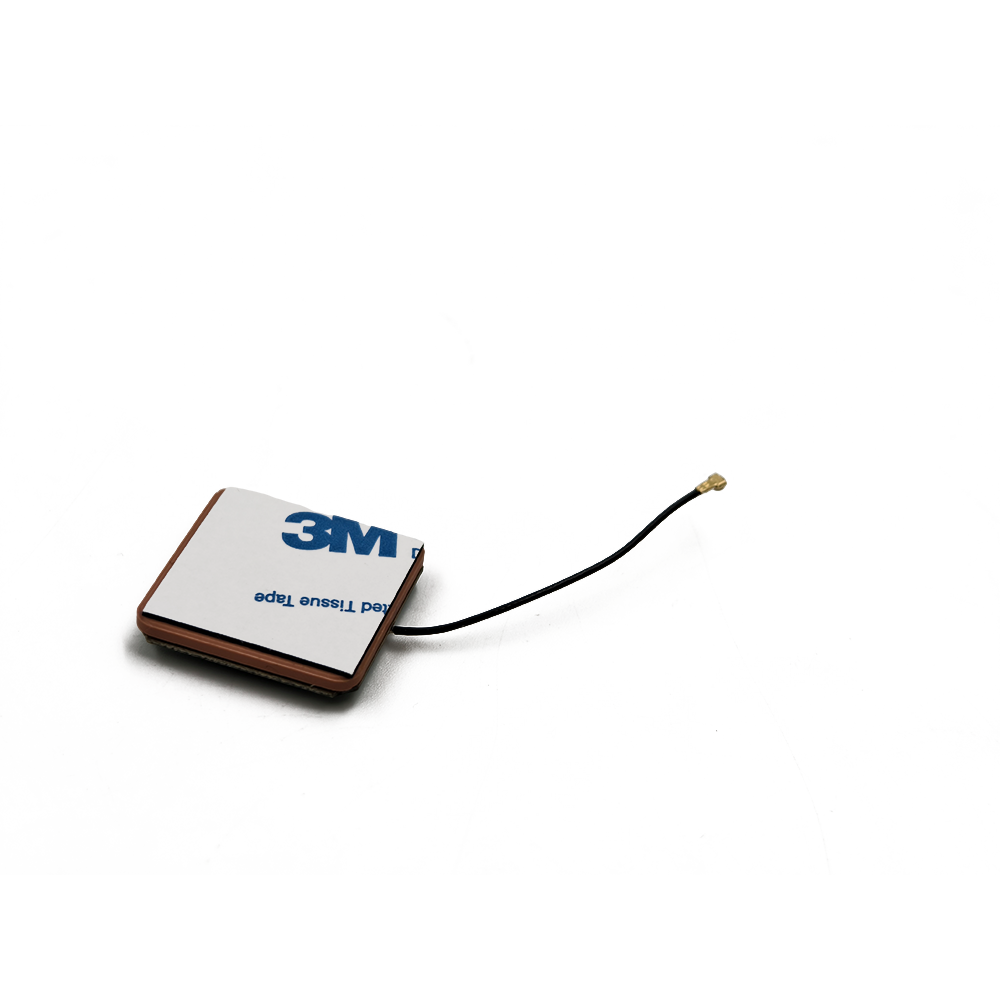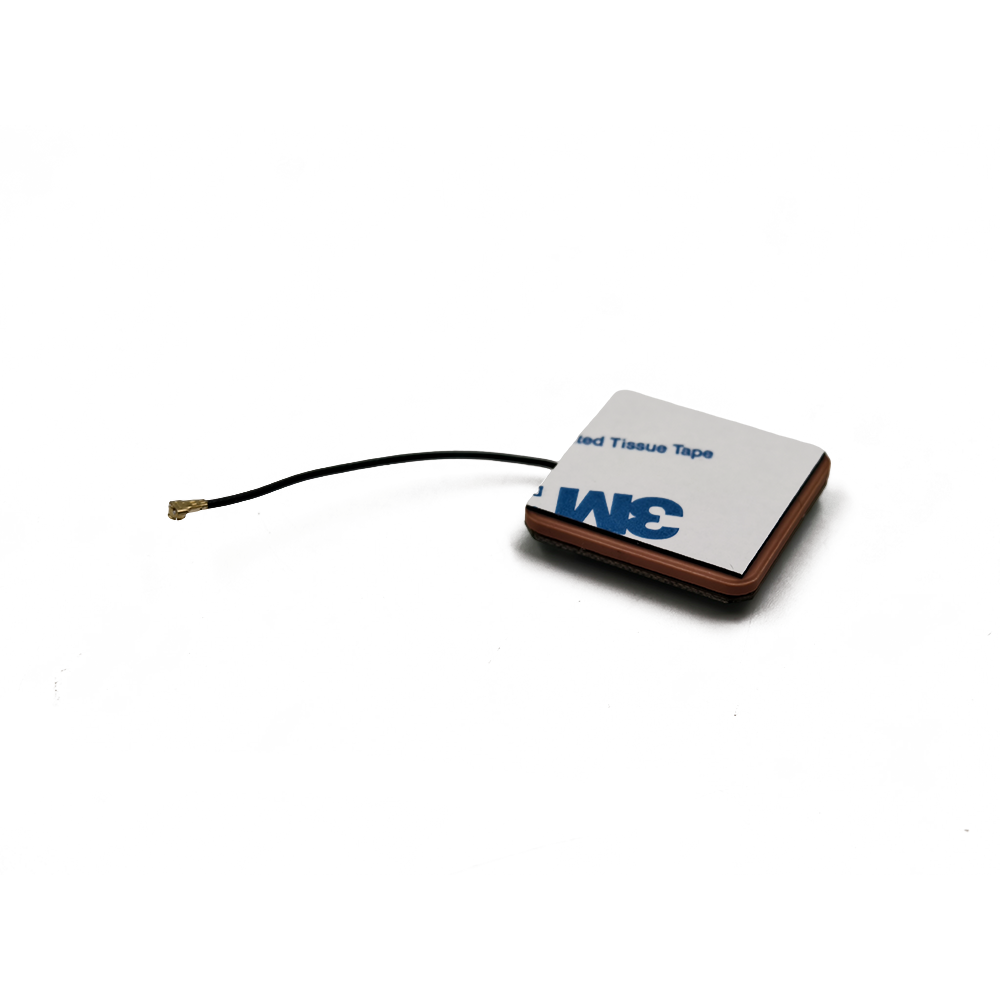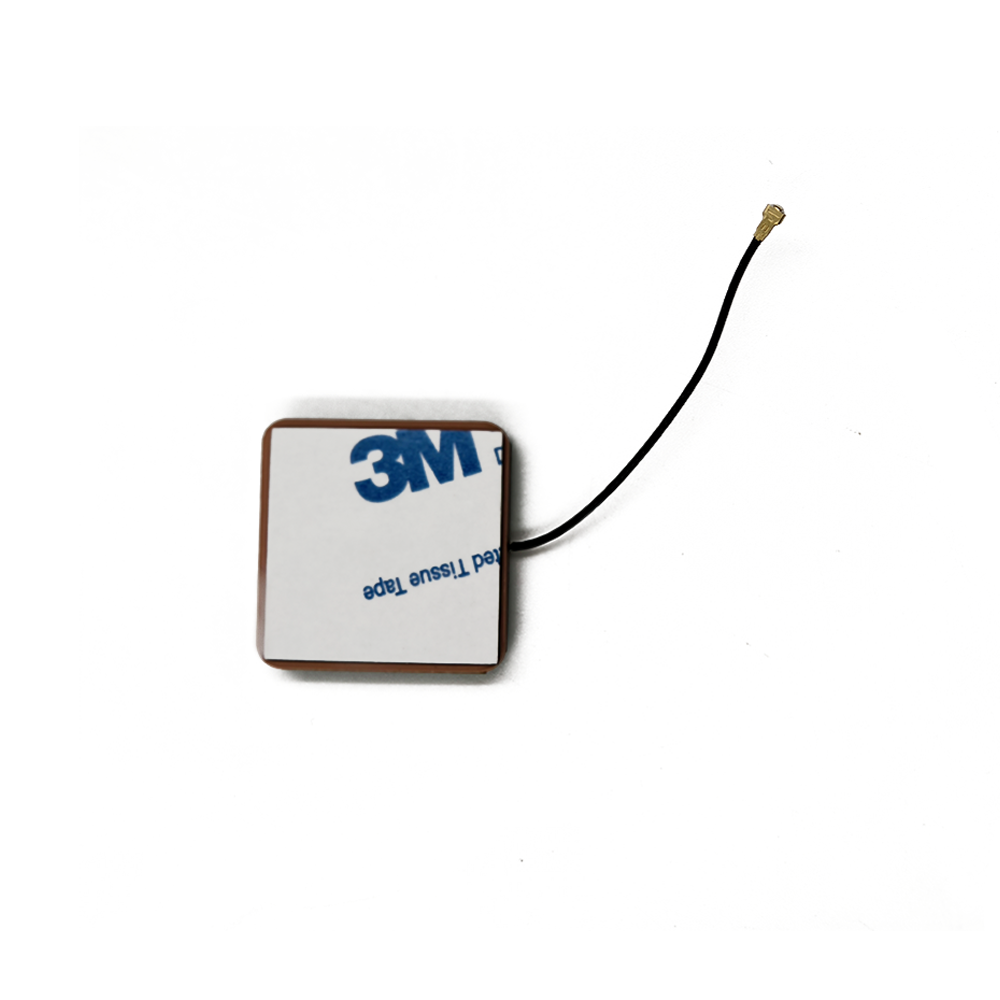5.1 Applications
5.1.1 Consumer Electronics
The consumer electronics industry is one of the largest users of wideband GNSS ceramic patch antennas. Smartphones, in particular, rely heavily on these antennas to provide location - based services such as navigation, ride - sharing, and location - tagged photos. The compact size of wideband GNSS ceramic patch antennas makes them ideal for integration into the slim and lightweight design of modern smartphones. Additionally, their wideband capability allows smartphones to access signals from multiple GNSS constellations, ensuring accurate positioning even in urban canyons or areas with limited satellite visibility.
Tablet computers and wearable devices, such as smartwatches and fitness trackers, also use wideband GNSS ceramic patch antennas. Smartwatches with built - in GNSS functionality enable users to track their outdoor activities, such as running, cycling, and hiking, with precise location data. The small form factor of the antenna is crucial here, as wearable devices have very limited space for components. The thermal stability of the ceramic substrate is also beneficial in wearable devices, as they are in close contact with the user's body and may experience temperature variations due to body heat and environmental conditions.
5.1.2 Automotive Industry
In the automotive industry, wideband GNSS ceramic patch antennas are essential components of in - vehicle navigation systems, advanced driver - assistance systems (ADAS), and connected car technologies. In - vehicle navigation systems use the antenna to receive GNSS signals and provide real - time turn - by - turn directions to the driver. The wideband capability of the antenna ensures that the system can access signals from multiple constellations, improving the accuracy and reliability of the navigation, especially in areas with tall buildings or tunnels.
ADAS features such as adaptive cruise control, lane - keeping assist, and automatic emergency braking rely on precise positioning data to function effectively. Wideband GNSS ceramic patch antennas provide the high - accuracy location information needed for these systems to operate safely. For example, adaptive cruise control uses GNSS data to determine the distance between the vehicle and the car in front, adjusting the speed accordingly. The antenna's ability to receive signals from multiple constellations ensures that the positioning data remains reliable even in challenging environments.
Connected car technologies, which enable vehicles to communicate with other vehicles (V2V), infrastructure (V2I), and the cloud (V2C), also use wideband GNSS ceramic patch antennas. These technologies require accurate and up - to - date location information to facilitate features such as traffic management, parking assistance, and remote vehicle monitoring. The wideband antenna's ability to receive signals from multiple constellations ensures that the location data is accurate and available at all times.
5.1.3 Aerospace and Defense
The aerospace and defense sectors use wideband GNSS ceramic patch antennas in a variety of applications, including aircraft navigation, satellite communication, and military positioning systems. In aircraft navigation, the antenna is used to receive GNSS signals and provide accurate positioning information for flight planning, en - route navigation, and landing. The thermal stability of the ceramic substrate is crucial in this application, as aircraft operate in a wide range of temperatures, from the cold of high altitudes to the heat of engine compartments.
Satellite communication systems on board aircraft and spacecraft also use wideband GNSS ceramic patch antennas. These antennas are used to receive and transmit signals to and from satellites, enabling in - flight Wi - Fi, voice communication, and data transfer. The wideband capability of the antenna allows it to operate over the frequency bands used by different satellite communication systems, increasing the flexibility and reliability of the communication link.
In military applications, wideband GNSS ceramic patch antennas are used in navigation systems for tanks, ships, aircraft, and soldiers. These antennas need to be rugged, reliable, and capable of operating in harsh environments, such as extreme temperatures, high humidity, and electromagnetic interference. The compact size and low cost of the antenna make it suitable for integration into a variety of military devices, from handheld GPS units to large - scale weapon systems.
5.1.4 Agriculture and Surveying
The agriculture industry uses wideband GNSS ceramic patch antennas in precision agriculture applications, such as automated guided vehicles (AGVs), variable rate technology (VRT), and crop monitoring. AGVs, such as self - driving tractors and harvesters, use GNSS signals to navigate through fields with high precision. The wideband antenna's ability to receive signals from multiple constellations ensures that the AGV can maintain its path even in areas with limited satellite visibility, such as near trees or buildings.
VRT uses GNSS data to apply fertilizers, pesticides, and water to crops at variable rates based on the specific needs of each area of the field. This technology helps to reduce waste, increase crop yields, and minimize environmental impact. The accurate positioning data provided by the wideband GNSS antenna is essential for the proper implementation of VRT, as it ensures that the inputs are applied to the correct locations.
Surveying and mapping applications also rely on wideband GNSS ceramic patch antennas. Surveyors use GNSS receivers with these antennas to measure the positions of points on the Earth's surface with high accuracy. The wideband capability of the antenna allows the receiver to access signals from multiple constellations, improving the accuracy and efficiency of the surveying process. Additionally, the compact size of the antenna makes it easy to transport and set up in the field.
5.2 Future Trends
5.2.1 Miniaturization and Integration
One of the key future trends in the development of wideband GNSS ceramic patch antennas is further miniaturization and integration. As consumer electronics devices become smaller and more compact, there is a growing demand for even smaller antennas that can be integrated into these devices without sacrificing performance. Researchers are exploring new materials and design techniques to reduce the size of the antenna while maintaining its wideband capability and radiation efficiency.
For example, the use of nanocomposite ceramic materials with higher dielectric constants may allow for further size reduction of the antenna. These materials have unique dielectric properties that can be tailored to specific applications, enabling the design of antennas that are smaller, lighter, and more efficient than traditional ceramic patch antennas. Additionally, the integration of the antenna with other components, such as the low - noise amplifier (LNA) and filter, into a single module is becoming increasingly common. This integration reduces the size and complexity of the GNSS receiver system, making it easier to integrate into small devices such as smartphones and wearables.
5.2.2 Improved Radiation Efficiency
Another future trend is the improvement of the radiation efficiency of wideband GNSS ceramic patch antennas. As mentioned earlier, one of the challenges of these antennas is their relatively limited radiation efficiency compared to other antenna types. Researchers are working on developing new design techniques and materials to address this issue.
One approach is the use of metamaterials in the antenna design. Metamaterials are artificial materials with unique electromagnetic properties that are not found in nature. They can be designed to manipulate electromagnetic waves in ways that are not possible with traditional materials. By incorporating metamaterials into the radiating patch or the ceramic substrate, researchers can improve the radiation efficiency of the antenna. For example, metamaterials can be used to reduce the dielectric losses in the ceramic substrate, increasing the amount of power that is effectively radiated or received.
Another approach is the optimization of the antenna's structure using advanced algorithms and simulation tools. These tools can model the electromagnetic behavior of the antenna in detail, allowing designers to identify and eliminate sources of loss. For example, the shape of the radiating patch, the size of the ground plane, and the thickness of the ceramic substrate can all be optimized to minimize losses and improve radiation efficiency.
5.2.3 Enhanced 抗 Interference Capabilities
With the increasing number of signals operating in the GNSS frequency band, there is a growing need for wideband GNSS ceramic patch antennas with enhanced anti - interference capabilities. Future antennas are likely to incorporate advanced filtering and signal processing techniques to reduce the impact of interference from other signals.
One promising technology is the use of adaptive antennas. Adaptive antennas use an array of radiating elements and advanced signal processing algorithms to dynamically adjust the antenna's radiation pattern. This allows the antenna to focus its reception on the desired GNSS signals while rejecting interfering signals. For example, if an interfering signal is coming from a specific direction, the adaptive antenna can adjust its radiation pattern to minimize the gain in that direction, reducing the impact of the interference.
Another technology that is likely to be integrated into future wideband GNSS ceramic patch antennas is cognitive radio. Cognitive radio is a smart radio technology that can sense the electromagnetic environment and adapt its operating parameters to avoid interference. By integrating cognitive radio technology into the antenna, the antenna can automatically detect and avoid interfering signals, improving the reliability and performance of the GNSS receiver system.
5.2.4 Multi - Functionality
Future wideband GNSS ceramic patch antennas are also expected to be more multi - functional. Instead of being designed solely for GNSS signal reception, these antennas may be capable of operating in multiple frequency bands and supporting multiple wireless technologies, such as Wi - Fi, Bluetooth, and 5G. This multi - functionality will help to reduce the number of antennas needed in a device, saving space and reducing cost.
For example, a single antenna could be designed to receive GNSS signals, transmit and receive Wi - Fi signals, and communicate with 5G networks. This would eliminate the need for separate antennas for each technology, making the device smaller and more compact. To achieve this, researchers are working on developing wideband antennas with multi - band operation and reconfigurable properties. Reconfigurable antennas can change their operating parameters, such as resonant frequency and radiation pattern, in response to different operating conditions. This allows the antenna to adapt to different wireless technologies and frequency bands, providing multi - functional support.
Conclusion
Wideband GNSS ceramic patch antennas have emerged as a critical component in modern GNSS receiver systems, enabling accurate and reliable positioning across a wide range of applications. Their unique combination of wideband operation, compact size, good thermal stability, and low cost makes them an ideal choice for use in consumer electronics, automotive, aerospace and defense, agriculture, and surveying applications.
In this paper, we have provided a comprehensive overview of wideband GNSS ceramic patch antennas, covering their design and construction, working principles, advantages and challenges, applications, and future trends. The design and construction of these antennas involve careful consideration of the radiating patch, ceramic substrate, ground plane, and manufacturing process. The radiating patch is designed to resonate at the desired frequencies within the GNSS band, with techniques such as multiple feed points and stacked patches used to achieve wideband operation. The ceramic substrate, with its high dielectric constant and good thermal stability, plays a crucial role in reducing the size of the antenna and ensuring reliable performance. The ground plane is essential for directing the radiation pattern and improving the antenna's gain and circular polarization characteristics.
The working principles of wideband GNSS ceramic patch antennas are based on the interaction of electromagnetic waves with the radiating patch, the generation of circularly polarized fields, and the efficient reception and transmission of GNSS signals. The advantages of these antennas, including wideband operation, compact size, good thermal stability, and low cost, have made them widely adopted in various industries. However, they also face challenges such as limited radiation efficiency, sensitivity to installation environment, cross - polarization suppression, and interference from other signals.
Looking to the future, the development of wideband GNSS ceramic patch antennas is expected to focus on further miniaturization and integration, improved radiation efficiency, enhanced anti - interference capabilities, and multi - functionality. These advancements will enable the antenna to meet the evolving needs of emerging applications, such as 5G - enabled connected cars, autonomous vehicles, and the Internet of Things (IoT).
In conclusion, wideband GNSS ceramic patch antennas have made a significant contribution to the advancement of GNSS technology and will continue to play a key role in the future of positioning, navigation, and timing (PNT) systems. As research and development efforts continue, these antennas are likely to become even more efficient, reliable, and versatile, enabling new and innovative applications that will benefit society in a wide range of ways.




































































 Language
Language
 En
En Cn
Cn Korean
Korean

 Home >
Home > 








 18665803017 (Macro)
18665803017 (Macro)













